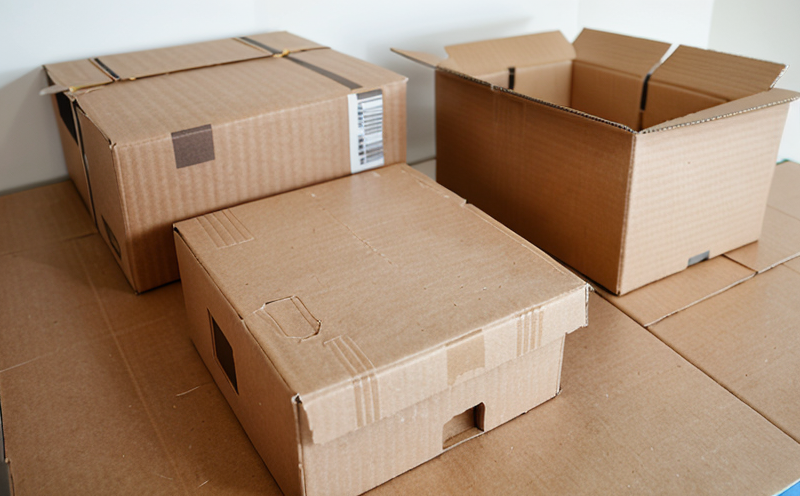TAPPI T 810 Corrugated Board Edge Crush Test (ECT)
The Corrugated Board Edge Crush Test (ECT), as per the American Society for Testing and Materials (ASTM) standard D5379, is a critical procedure used to evaluate the strength of corrugated paperboard. This test is particularly important in the packaging industry where the integrity and durability of corrugated boxes are paramount. The ECT measures the resistance of the board to being crushed when a force is applied parallel to its grain direction. Understanding this parameter helps ensure that the packaging materials used can withstand the stresses encountered during shipping, storage, and handling.
The test involves clamping a specimen between two plates and applying increasing pressure until it crushes. The machine measures the force needed to compress the board to a specific point along its length. This value is then reported as the Edge Crush Test (ECT) value in pounds per inch (lb/in). Corrugated boards with higher ECT values are generally more resistant to compression forces, making them suitable for heavy-duty packaging applications.
Corrugated paperboard is made up of three layers: the linerboard, the middle layer known as the fluting or corrugation, and the backing. The fluting is responsible for providing structural integrity against compressive loads. By testing ECT values, manufacturers can ensure that their corrugated boxes meet the required standards set by industry bodies such as TAPPI (Technical Association of the Pulp and Paper Industry), ASTM, and others.
The importance of this test lies in its ability to predict how well a corrugated box will perform under real-world conditions. For instance, higher ECT values can indicate better performance in environments where boxes are subject to significant pressure or jostling during transportation. This is particularly crucial for industries like food and beverage, electronics, and pharmaceuticals that require robust packaging solutions to protect their products.
| Standard | Description |
|---|---|
| TAPPI T 810-2023 | Method for Determining the Edge Crush Strength of Corrugated Board. |
| ASTM D5379-20 | Standard Test Method for Determining the Edge Crush Strength of Corrugated Board. |
Competitive Advantage and Market Impact
- Informed Decision-Making: By conducting ECT tests, companies can make data-driven decisions regarding the choice of materials for their packaging. This ensures that they are selecting the most appropriate type of corrugated board based on their specific needs.
- Cost Efficiency: Ensuring that the right amount of material is used in production reduces waste and lowers overall costs without compromising product safety or quality.
- Regulatory Compliance: Adherence to industry standards helps companies avoid penalties associated with non-compliance, thereby maintaining a positive reputation among clients and stakeholders.
Use Cases and Application Examples
The TAPPI T 810 Corrugated Board Edge Crush Test (ECT) is widely used across various industries that rely heavily on corrugated packaging. Here are some specific use cases:
| Industry Sector | Use Case |
|---|---|
| Foods and Beverages | Ensuring that boxes can withstand the pressure of stacking in warehouses or during transport to retail stores. |
| Electronics | Protecting fragile components from damage during handling and shipping. |
| Pharmaceuticals | Avoiding contamination of products by ensuring that packaging is robust enough to prevent tears or punctures. |
The ECT test not only helps in protecting the contents but also enhances brand reputation. A well-packaged product instills confidence among consumers, which can lead to increased sales and customer loyalty. Furthermore, it plays a vital role in supply chain management by ensuring that products arrive at their destination undamaged.





